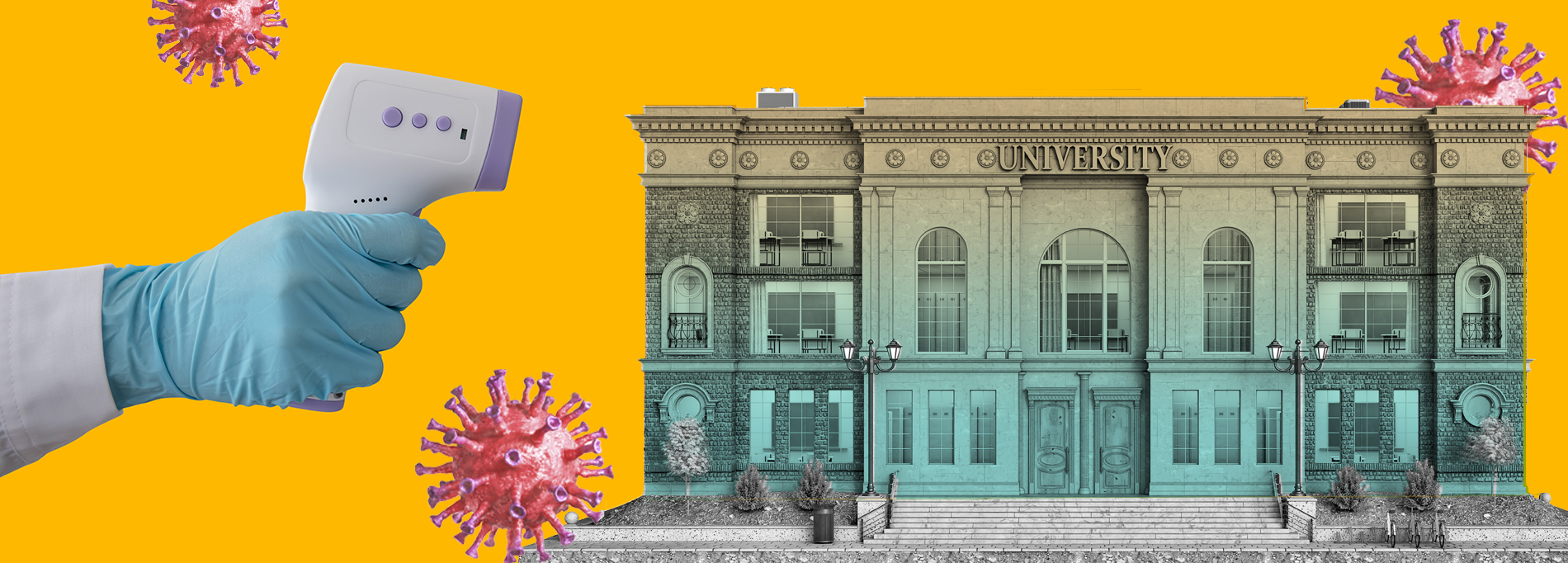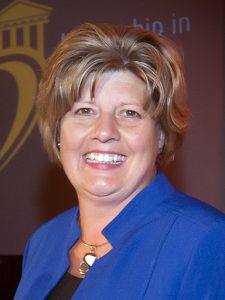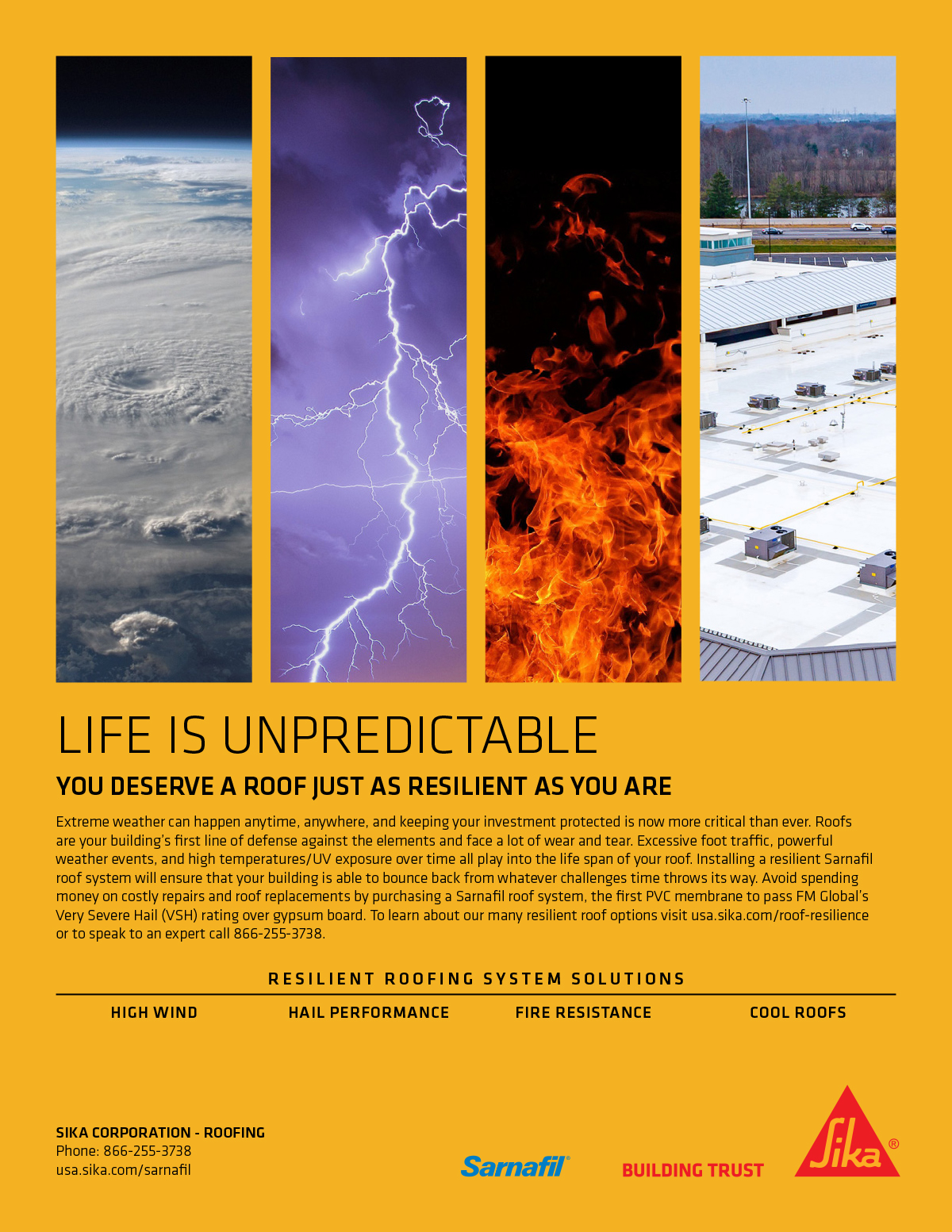As we approached the one-year anniversary of the campus shutdowns due to the COVID-19 pandemic, we asked several APPA members to share with us what they learned from the experience, how the pandemic affected their institution and their staffs, how they responded, what was lost, and what glimmers of hope and positive outcomes they perceived as we move into a new phase post-vaccine. We thank the 12 facilities professionals who contributed the entries that follow.
—Steve Glazner, editor
Ruthann Manlet
Associate Director, Facilities Management
West Bank District
University of Minnesota
This past year has been a real testament to the value, strength, adaptability, and flexibility of the facilities management (FM) staff, especially custodial. It is more apparent than ever that the “behind the scenes” employees are really the people that make FM work. We are going to continue to encourage input and involvement from all employees as they see and deal with the daily issues in our facilities, and we will explore cross-training as an option so that all are aware of basic issues in the event that a particular trade is not available.
Our campus will be permanently changed due to the COVID-19 pandemic, simply because it has made us realize that offsite, distance learning is going to be a significant part of the educational process from now on, and that technology will play an even larger role. Of course, our facilities must be maintained, but transforming our campus to accommodate the new way we deliver our educational experience will demand that we look at all aspects of the campus.
Maintaining campus facilities has always been an integral part of our overall strategic plan. A renewed emphasis on the health and well-being of the employees, staff, vendors, students, and visitors will now be a larger part of FM—which should and hopefully will be more involved in strategic discussions regarding the comprehensive plan for ways to meet the new demands of our society.
This past year we learned that although we have contingency plans, all of us were terribly underprepared for the health crisis brought on by COVID. The pandemic affected all of us in ways we could not have imagined previously, both personally and professionally. We are now developing plans that include working from home, defining essential versus nonessential employees, how and when employees are required to report to work, what new safety measures we need to implement and communicate, and how to prepare for all the issues we describe as “we don’t know what we don’t know.”
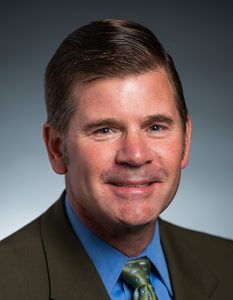 Andy Feick
Andy Feick
Associate Vice President, Facilities
Swarthmore College (PA)
The operative word for our future campus is efficiency. While we have certainly had champions of efficiency, it is no longer the battle cry of a very few trying to rally the institution to a way of thinking that will help us realize our carbon-neutral future—it is a broader acknowledgment that we can do better. COVID-19’s impact on efficiency has elevated its prominence from “something Facilities does to save energy” to a recognition that we can achieve our outcomes without all of the physical space we thought we needed. Taking the thinking a step further, it is evident that more efficient space use can translate into less physical space required, less energy use, less carbon, and—perhaps most attractive—it could reduce the ballooning total cost of ownership of our physical campus.
 David Handwork
David Handwork
Assistant Vice Chancellor for Facilities Management
Arkansas State University
All of the A-State facilities staff, myself included, got tired of the phrase “COVID changes everything.” However, we learned that we could all adapt or change quickly. If the same changes were prompted prior to the COVID pandemic, all of us would have defiantly resisted—universal human nature, right? I believe the primary positive from the pandemic is learning that it’s not helpful to resist adaptations and major changes. Staff awareness of strengths and weaknesses, whether personal and institutional, matured through these adaptations. Growth opportunities always begin with this fundamental awareness.
 Jessica Abbott
Jessica Abbott
Director of Facilities
Wolcott Public Schools (CT)
The COVID-19 pandemic really opened my eyes to how much we as facilities professionals are used to our routines as we move through different processes during the academic year—commencement, move-out, summer cleaning/repairs, move-in, etc. The new rhythm of constant change and resulting discomfort gave me the courage to do something a little crazy—search for a new job during a pandemic! After working for 17 years at my previous institution (where I had also gone to college), it was scary to make the leap, but as I reflect on my decision after having been at my new job for about 90 days, I am so glad I did. By moving to a job in a K-12 school district, I am growing in ways that I couldn’t have if I continued to stay at the same institution, and I’m thriving with the new challenges I face every day.
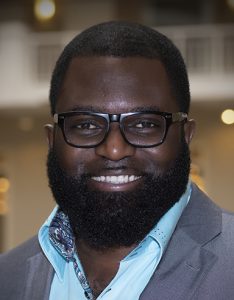 Ayodele Akinola
Ayodele Akinola
Interim Executive Director
Facilities Operations and Capital Planning
Truckee Meadows Community College (NV)
The sudden emergence of the COVID-19 pandemic presented huge disinfection challenges. Common surfaces and touchpoints, even when disinfected, leave no effective residual protection. With no effective residual protection, COVID-19 microbes then thrive. Truckee Meadows Community College deployed BioProtect on our campus locations to help with surface protection. This EPA-registered, water-based antimicrobial technology provided persistent and continuous protection on our surfaces for up to 90 days. The antimicrobial coating, when applied to both porous and nonporous surfaces, forms a layer of nanospikes with a positive charge that attracts the negatively charged COVID-19 microbe, rupturing the COVID cell membrane on contact.
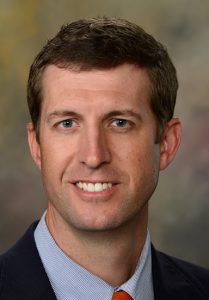 Dan Whatley
Dan Whatley
Assistant Vice President, Facilities Operations
Auburn University (AL)
The COVID-19 pandemic has demonstrated to the entire campus community what the APPA community has always known—that FM is essential to the operation of a campus. Whether the task was increased disinfection, modifications to HVAC systems, installation of touchless fixtures, modified mail-services procedures, ordering and warehousing of personal protective equipment (PPE), or conducting occupancy studies, the FM team was standing ready to deliver. This eagerness to support the needs of the university garnered much attention from the campus community, and I am confident that the FM organization has never been viewed in a more favorable light.
Advertisement
Article continues below
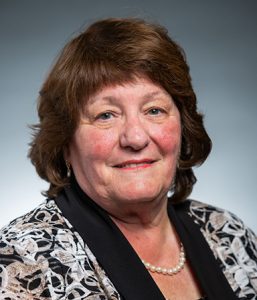 Patty Smith
Patty Smith
Director of Facilities
Cabrini University (PA)
The most significant change this past year has been the absence of interaction with coworkers and community members. Handshakes are no more. Body language has evolved into whatever can be observed in a virtual meeting, and sometimes not even that if someone decides to hide behind his or her picture.
Without our students, we have equated the campus to a ghost town. We miss their laughter and their liveliness. Though the campus has reopened, the dining hall is takeout only, leaving students with no place to gather and socialize. For the staff, conversations are kept to a minimum, and we stay socially distanced; it’s become commonplace but is a strange feeling nonetheless. With those of us essential workers who remained, primarily facilities, public safety, and some VPs, even interactions with people still on campus have changed. No morning greetings or departing words can be expressed. Conversations are kept short, all face-to-face meetings are between a few people in a large space, and the virtual meetings occurring in one’s own building, with attendees holed up in their respective offices, seem somewhat inhuman. Working lunches have disappeared. Training sessions, once a great opportunity to gather as a group and learn, are now done in isolation.
However, the increased time available to tackle projects is a positive effect. Refreshing paint in common areas, performing primary floor care, and removing and replacing decaying buttresses on a building in the center of campus are but a few examples.
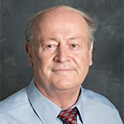 Jim Demarest
Jim Demarest
Associate Vice President, Facilities Services
University of South Carolina
COVID has forever changed our organization and how we service the campus. Like many college and university campuses, we have gone through a real learning experience managing the facilities portfolio while complying with new and changing guidelines for COVID.
Our first challenge was managing employee time. Employees were provided with emergency paid sick leave that amounted to 80 hours for each employee in addition to their accrued sick leave. Many of our employees used this time while the university was closed.
The most significant change prompted by COVID was the increase in staffing for our custodial services. The unit was charged with providing a higher level of campus cleaning while also being responsible for campus sanitizing. We hired 200 new contract workers to move our cleaning levels up to APPA Level 2, and to provide sanitizing services at Level 1 for high-touch surfaces.
Lastly, I am not sure we all understand or fully know the impact that COVID has had or will have on our organizations going forward. The world we know now, through technology and Teams and Zoom, has brought us together during a time of isolation, but it has also separated us in terms of personal contact, which is part of the glue that holds our organizations together.
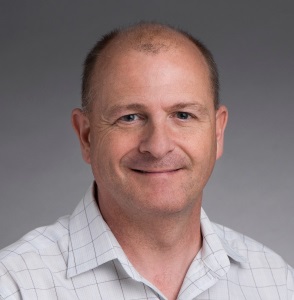 John Moore
John Moore
Associate Vice President, Facilities Management
Rochester Institute of Technology (NY)
The most significant change we experienced since the pandemic arrived was our increased sensitivity to the priority of cleaning and clean-air systems in our buildings. But it wasn’t just about COVID. We also learned a great deal about our vulnerabilities to bacteria and viruses in our spaces and, more importantly, about our ability to manage them. We learned that our role in facilities is to protect our community from these hazards and that we can make an impact. We developed new cleaning protocols to clean and disinfect common surfaces and restrooms. We have increased our standards to include MERV-13 filters in our HVAC systems, and we have invested in technology to help neutralize airborne contaminants.
As with any emergency situation, you should incorporate what you learned from it into your procedures. We have now developed a much more robust plan to support isolating and quarantining students. We have also added more IT resources to our Critical Incident Management Team.
The most foundational change resulting for us from COVID-19 is based on the significant increase in importance of the frontline supervisor as a leader and communicator. Throughout the pandemic, the frontline supervisor has been the sole and only effective means to provide information, train people in new procedures, explain benefits, encourage strength and willpower to continue efforts, and seek innovations to our processes. These leadership abilities are now the highest priority in our qualification process, replacing even the technical knowledge of the craft. We are modifying our interview process for manager positions accordingly.
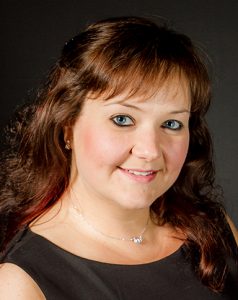 Beth Clark
Beth Clark
Budget Analyst, Office of Physical Plant
Pennsylvania State University
Given the number of staff who continue to work remotely one year later, one of the most negative impacts of the pandemic on our staff has been the loss of the “pop-in” to a colleague’s office or the quick “coffee talk” to run through a few details or get a quick answer. Yes, the same details can be ironed out via email, and the same question can be answered in an online chat or phone call, but personal connections are being lost. We are missing the face-to-face interactions that boost not only productivity but also—and more importantly—morale.
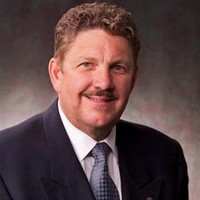 Steven Gasser
Steven Gasser
Associate Vice President, Facilities Management
University of Calgary (AB)
Since the pandemic arrived, the campuses are empty with almost all classes moved online; only 18-20 percent of classes are face-to-face. You can shoot a cannon down the hallways on most days and only hit FM staff that are left to ensure that everything is still fully functional and sanitized. We developed our pandemic plan over five years ago and updated it last year, so the most significant change we have made is to add a pandemic occupancy limit to our integrated workplace management system (IWMS) platform.
The most positive effect of the pandemic is an increase in morale for our caretaking staff, as they see a direct line of sight to our mission and to protecting the university. Another positive outcome has been that senior administration has never been more aware of how important our least-paid staff are, and they continue to appreciate all their hard work.
The most negative effect of the pandemic is a decrease in connectiveness between our management and administrative staffs that work from home. Everyone is missing the coffee klatch and hallway meetings, and the ad hoc social time.
We have not yet made any foundational changes to meet the challenges expected going forward; however, we can see that space use and occupancy will be significant discussion points in the near future.
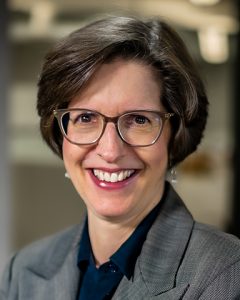 Margaret Tennessen
Margaret Tennessen
Deputy Associate Vice Chancellor
University of Wisconsin Madison
It would be a mistake to minimize the challenges facilities staff have faced as a result of the pandemic. Our staff have worked long hours modifying campus operations and reconfiguring classroom spaces to keep our community safe, while dealing with personal concerns about health, job security, and overall well-being. At the same time, our team is stronger, more resilient, and nimbler than we were a year ago. We are more adept at using technology, we’ve improved internal and external communications, and we’ve built stronger, more collaborative relationships with our academic partners that will greatly benefit our institution in the long run.
